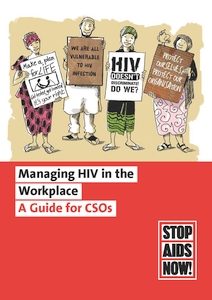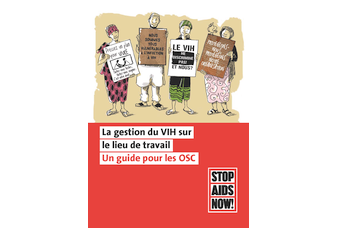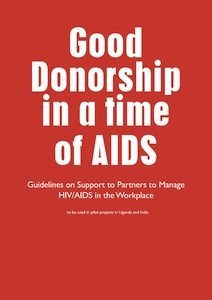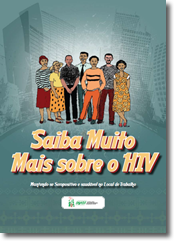 Saiba Muito Mais sobre o HIV: Mantendo-se seropositivo e saudável no local de trabalho
Saiba Muito Mais sobre o HIV: Mantendo-se seropositivo e saudável no local de trabalho
A SAfAIDS me pediu para escrever um livreto para os funcionários, como parte de um kit de ferramentas para apoiar as respostas do local de trabalho ao HIV. Eu queria dar aos leitores mais opções e mais detalhes do que as mensagens habituais de prevenção ao HIV, e assim estabelecer 26 maneiras pelas quais os indivíduos podem reduzir o risco de contrair o HIV.
O livreto também descreve as etapas que os indivíduos podem seguir para criar um ambiente de trabalho mais saudável e de apoio, e foi originalmente escrito em inglês.
(The Portuguese translation of Know Much More About HIV)
Transferência
Extrair
O que é que o HIV e SIDA têm a ver com o teu local de trabalho?
Há muitas coisas que afectam o teu trabalho e dos teus colegas e quão produtivo é a tua organização. Dentre tantos factores o impacto da epidemia do HIV e SIDA é o mais provável de ser significativo (importante). Os efeitos do HIV e SIDA no local de trabalho incluem:
- Se os trabalhadores ficarem infectados pelo HIV e não acederem ao tratamento, então o HIV por sua vez irá afectar negativamente a sua saúde e produtividade, levando a doenças graves e eventual morte;
- absentismo do pessoal acrescido e a uma maior mudança de trabalhadores causam problemas, tais incluem projectos não terminados, metas não cumpridas, colegas sobrecarregados de trabalho, gestores que desperdiçam demasiado tempo na resolução de problemas relacionados com questões de saúde e uma baixa moral na força laboral;
- As despesas do pessoal tendem a aumentar. Isso ocorre devido aos mais elevados custos médicos, mais despesas com funerais e subsídios de morte, e custos acrescidos de recrutamento e treinamento;
- A eficiência é também posta em causa quando o pessoal está indirectamente afectado pelo HIV. Por exemplo, cuidar dos familiares doentes ou assumir responsabilidades pelos filhos dos familiares, leva tempo e causa stress.
No entanto, não estamos sem poder em relação ao HIV. Nós podemos gerir o HIV no local de trabalho de três formas:
- Apoiar o pessoal (e algumas vezes os membros da sua família) que estejam infectados pelo HIV para manterem a sua saúde e a sua capacidade de trabalho.
- Apoiar o pessoal e os membros da sua família para se protegerem das infecções do HIV.
- Advocar e criar um ambiente de trabalho de apoio que implemente a sua política de HIV e implementar um programa de bem-estar, com educadores de pares, campanhas de programas de sensibilização educativos para o pessoal.
Qual é o conteúdo do livro?
A secção 2, aborda informação básica sobre a transmissão do HIV, a sua evolução e transformação em SIDA e os tratamentos para o HIV, e para as infecções oportunistas que surgem como resultado do virus. Pode ser útil fazer lembrar, embora mesmo tu saibas muito sobre o assunto. Podes usar a informação aí existente para resolver por ti próprio, caso uma certa situação aponte para a possibilidade de transmissão do HIV.
A secção 3, aborda as formas de prevenção da transmissão do HIV, isso significa tanto protegeres-te para não ficares infectado, como evitar a transmissão do HIV para outras pessoas.
A secção 3.1, vai para além do ABC do costume da prevenção do HIV e dá-te 14 diferentes opções para reduzir a hipótese de transmissão do HIV através do sexo! Podes encontrar novas opções aí existentes que podes empregar.
A secção 3.2, focaliza-se na redução da transmissão do HIV de mãe para filho. Ela inclui opções para casais que queiram ter um filho, onde um deles ou ambos estejam infectados pelo HIV.
A secção 3.3, olha para as formas de se manter saudável e de prevenir as infecções oportunistas.
A secção 3.4, aborda as formas de redução da transmissão do HIV através de procedimentos médicos, cortes e infecção, esta secção também dá-te ideias para reflexão.
Na secção 4, passamos o tema mais geral de valorização da nossa saúde. O HIV não constitui a única ameaça que nós enfrentamos e há muitas coisas que nós podemos fazer para aumentar as nossas hipóteses de desfrutar de uma boa saúde e de levar uma vida produtiva.
Por último, na secção 5, nós apresentaremos as formas chaves através das quais nós podemos criar um local de trabalho e de apoio favorável para todos os trabalhadores.
An assessment of the effects of the Stepping Stones with Children training programme on Tanzanian children affected by HIV and their caregivers
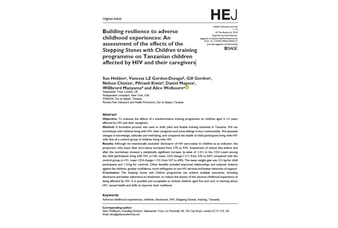

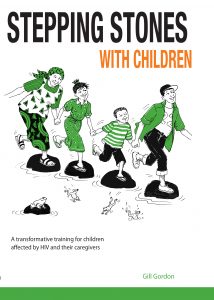 A transformative training for children affected by HIV and their caregivers
A transformative training for children affected by HIV and their caregivers
 Stepping Stones with Children Counselling Guide
Stepping Stones with Children Counselling Guide
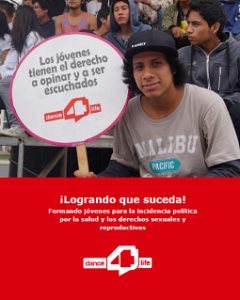




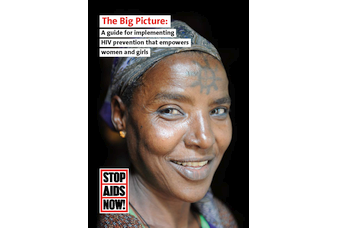
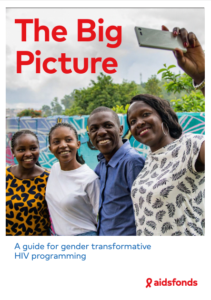 The Big Picture: A guide for gender transformative HIV programming
The Big Picture: A guide for gender transformative HIV programming
